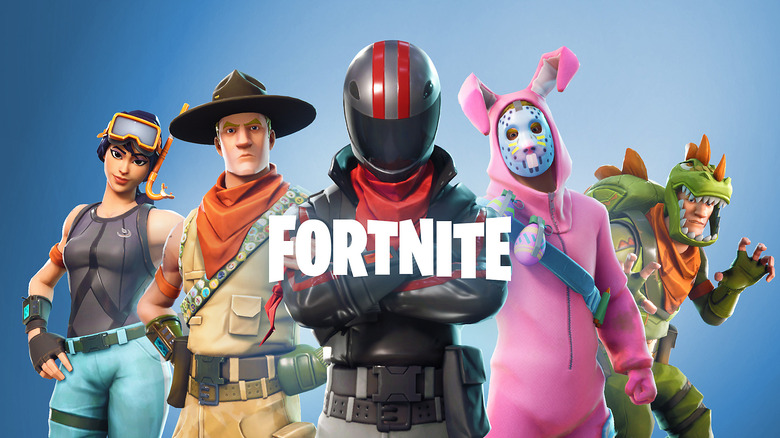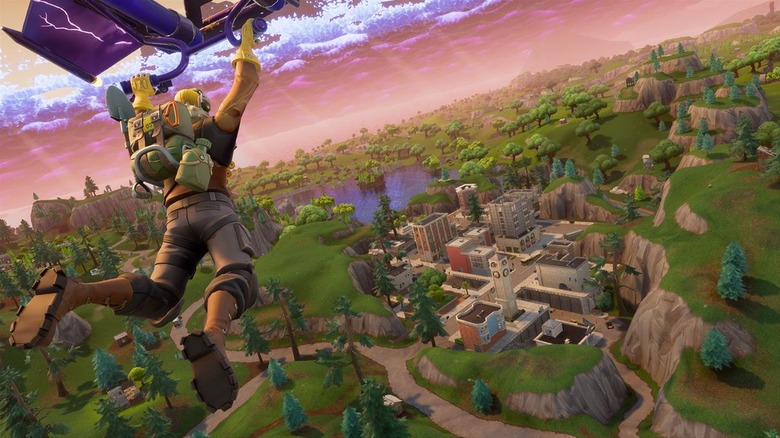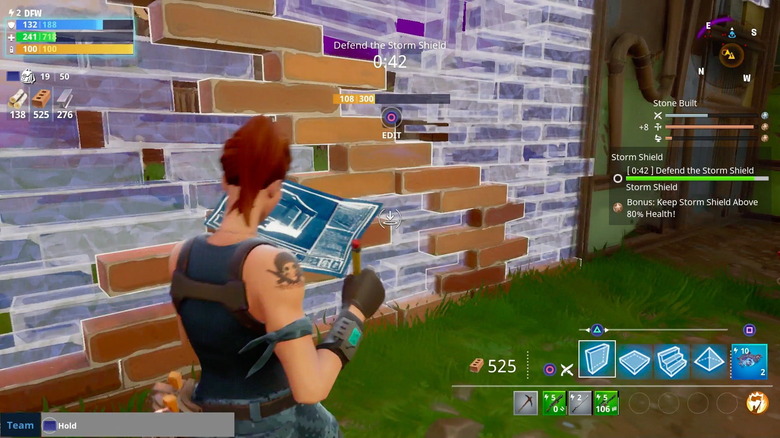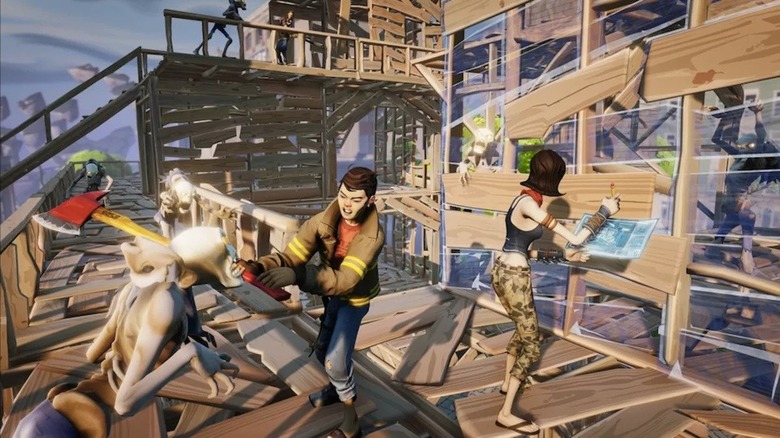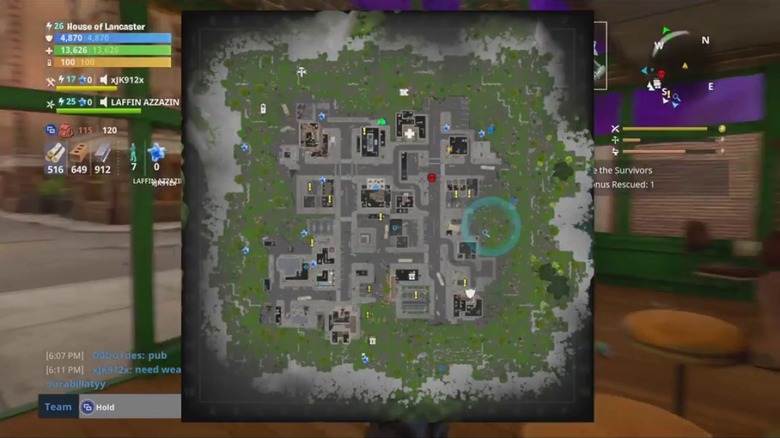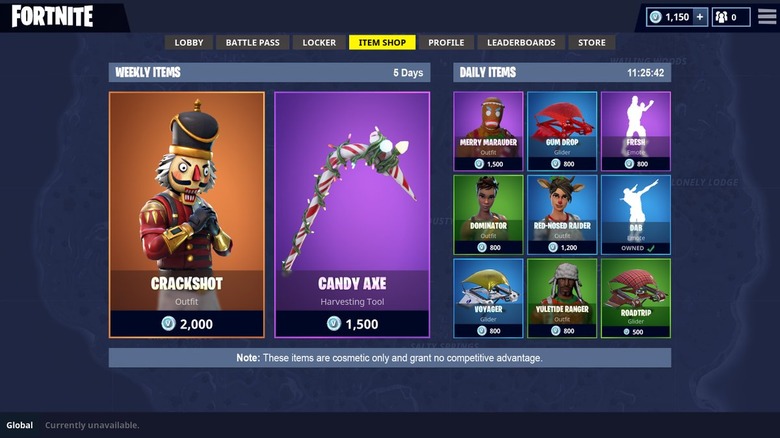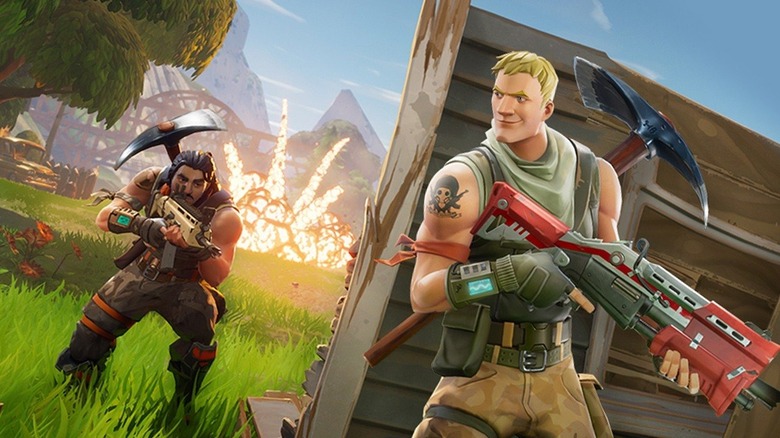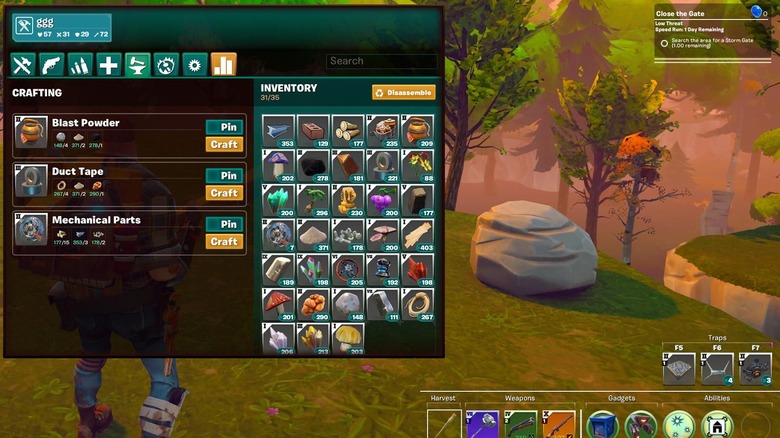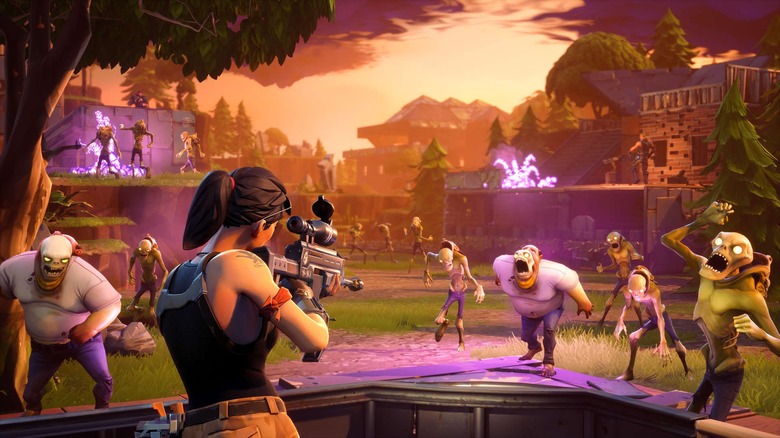This Is What Fortnite Almost Looked Like
What can be said about Fortnite that hasn't already been put down, flipped, and reversed? It's the game that seemingly everyone has heard of, and it's making Epic Games a whole lot of money. Kids can't stop playing it in school. Parents are hiring tutors to help their kids win more matches. The world is going crazy, and we have Fortnite to thank.
But the Fortnite we're all familiar with today is pretty new. Battle Royale, in particular, only released in September 2017, and it was by no means the original focus of the game prior to that. Instead, Fortnite started out primarily as a co-op zombie survival game, and has changed quite a bit in its six-plus years of development.
Today, you'll get to learn all about those changes.
It's not uncommon for games to warp and bend as development marches on. But given Fortnite's recent popularity, it's fun to go back and look at what might have been. Had Epic not made some key changes, there's a good chance Fortnite would have been far less addicting. And we'd live in a far different world today — one without a floss dance emote.
Here's what Fortnight almost looked like.
Fortnite was originally planned as a PC-exclusive title
Are you one of the millions of Fortnite players doing battle on a PlayStation 4, Xbox One, or Nintendo Switch? Or have you taken your talents to the mobile version on iOS? If so, you should thank your lucky stars that the version you're playing even exists.
Because Fortnite was originally going to be a PC-exclusive game. And, wow, what a different world we'd live in if that were still the case.
Epic's reason for PC exclusivity was sound at the time. In the middle of Fortnite's development, the team working on the game was by far the largest at the studio. And Epic just wasn't sure how the newer generation of consoles would handle a persistent, constantly evolving free-to-play game. The PC was proven ground for this business model, though, so they threw all their initial efforts there.
Fortunately, the Xbox One, PlayStation 4, and later, the Nintendo Switch, were shown to be safe havens for games that had free-to-play models. "Things have changed from the console space and have adapted to the new market, which is cool," Fortnite lead designer Darren Sugg told Eurogamer. "So because of those adaptations the future for where Fortnite ends up is not set in stone. I think there's lots of possibilities about how you can interact with Fortnite on different platforms."
Building once involved playing a mini-game
Building in Fortnite is what sets the title apart so drastically from other shooters and survival games. Construction on a tile begins immediately, and the piece being built instantly becomes useful for cover, or for gaining higher ground on an enemy. But building wasn't always a highlight in Fortnite. It didn't even used to be fun.
Why? Because Epic's first take on building involved a small mini-game. And when a zombie horde is attacking, or a PvP opponent is shooting at you, the last thing you want to see is a mini-game.
"It took us a while to get to how we do building now, where building is super frictionless," said producer Roger Collum in an interview with Game Informer. "Our first pass at it was like, we should actually build ... you know, you have to hit a button and make it a mini-game. We realized, you know, that's not fun."
That design decision ended up being a good one, to put it mildly. The fast pace of building in Fortnite adds excitement to both of the game's modes, Battle Royale and Save the World. And it would be tough to imagine Fortnite without it.
The art style wasn't always cartoony
Another unique attribute of Fortnite is its art style. For a game that is either a zombie survival title or an action shooter, depending on your mode of choice, Fortnite's look is unexpectedly bright and cartoony. It's an aesthetic that, according to Kotaku, the team gleaned from properties like "Pixar, Tim Burton, and even Looney Toons." But this wasn't always the look Fortnite was going for.
Early on, Fortnite was going to take on a much darker tone — similar to the more gruesome Gears and Unreal games Epic had made previously.
So why the change? According to Cliff Bleszinski, who was still with Epic Games early in Fortnite's development, the team wanted to avoid an "exhausting environment." Instead, Epic wanted to create a more open and inviting world that players could have fun in. Not to mention, Bleszinski didn't want to "be in the same space as the awesome DayZ."
So there you have it. The next time you see someone on a shopping cart fly by, or you see a teammate pop an emote after downing a zombie, just know that Fortnite could have been a much more somber experience.
Both the campaign map and user interface were revamped during development
It's no big secret that video games can change quite dramatically during development. Designers and developers meld their minds to find solutions to problems, testers give things a go, and sometimes, gameplay issues pop up that need to be addressed. Fortnite is no exception here. During the many years the game was in development, it underwent a whole bunch of changes.
In one entertaining instance, a writer from PC World was told that the map he was playing on was already outdated. And the current UI was getting tossed.
That was in the summer of 2015, and back then, it seemed as though Epic had at least landed on a solid gameplay loop. That is, the underlying structure of building and battling was intact. But the game, according to that same PC World writer, was "a bit too big and unwieldy." The user interface was confusing, and Epic hadn't found a campaign map that did the game justice.
Both changed, and you can now see the difference in today's version of Save the World, which offers a far more streamlined experience.
Microtransations almost took the form of card packs
A few years back, Epic was certain of at least one thing when it came to Fortnite: the game would be a free-to-play title supported by microtransactions. What the studio didn't quite have figured out, though, was the form those microtransactions would take. Could Fortnite feature a cosmetics store? Or, perhaps, sell upgrades as part of a more play-to-win type of model? Epic kicked around a lot of ideas, and in an interview with IGN, spilled the beans on one of them.
Card packs — not dissimilar to those found in games like Rise of the Tomb Raider or Mass Effect 3.
In the end, that's not the route Epic took to drive revenue. Today's version of Fortnite makes use of a Battle Pass and cosmetics shop in Battle Royale, as well as "llama piñatas" in its Save the World mode. The latter is far more random than the former, but neither are required to play the game. And in the case of Save the World, those who've paid for early access to the mode get six free llamas every day.
Fortnite almost had an entirely different take on PvP
In the world of video games, Fortnite: Battle Royale is the "it" boy band. You can love it or hate it, but chances are, you've heard of it. And there doesn't seem to be a statement that is too hyperbolic when describing its popularity. But the fascinating thing about Fortnite's large-scale multiplayer mode is that it wasn't part of the original plan. Epic had a much different idea for how Fortnite PvP would look when developing the game three years ago, and there wasn't a Battle Bus in sight.
Instead, Fortnite's versus mode was meant to be a 5-on-5 affair.
We know what you're thinking: that's, like, 90 less players than you'll find in Battle Royale. That's a pretty big shift, but that's not the only thing different about the PvP mode Epic abandoned. Storms of zombies could interrupt matches at any time, forcing teams to battle both each other and the undead simultaneously. It was PvPvE, and it had the potential to be hectic.
Alas, gamers never got to see what that mode could have been like. The world got Battle Royale, and things haven't been the same since.
The building and battling systems used to be confusing
There are two major systems in Fortnite. One is the system for building and crafting that allows you to construct enormous forts and lay down traps. The other is the system for combat, which helps you survive through the use of guns and melee weapons. Today, moving between the two systems is relatively simple — it's the tap of a controller button or the press of a key.
But it didn't use to be so easy. And those who played early versions of Fortnite had a very hard time surviving because of it.
According to developer Billy Bramer, who spoke about Fortnite's development at the 2013 Game Developers Conference, players initially couldn't tell what mode they were in. This would cause them to start building walls and floors when they actually meant to attack an enemy. When Epic tried to address this by giving players a hammer in "build" mode, players were confused that they couldn't use it as a weapon.
"To the player, a hammer is a hammer and it makes perfect sense that if a monster attacks and I have a hammer in my hand, I can hit you with it."
Eventually, Epic landed on something that worked. The studio made the player hold a blueprint in "build" mode, and allowed for a quick one-button toggle between building and combat. And those are the controls the game ships with today.
Fortnite might not have survived without Battle Royale
You've seen all the ways Fortnite has changed since the early days of its development. The art has changed. The gameplay systems have changed. And the game is available on far more platforms than Epic planned to support. But there's a wild truth that exists about Fortnite, and we sometimes lose sight of it because of how popular the game has become. So let's acknowledge it.
There might not even be a Fortnite if Battle Royale hadn't launched.
It's easy to forget these days, but there was a time when Fortnite existed without PvP. Save the World hadn't become a separate game mode yet — rather, it was the only mode. And that version of the game received a lot of "meh" reviews that praised its gameplay mechanics but knocked it for being too repetitive.
Fortnite wasn't maintaining a whole lot of interest. And it's fair to wonder if Epic would have kept supporting the game without a captive audience. It certainly didn't stand behind Paragon. So what might Fortnite have looked like today? Canceled, that's what.
But Battle Royale changed that. And now Epic is making money hand over fist and supporting both Battle Royale and Save the World. So everyone wins.

